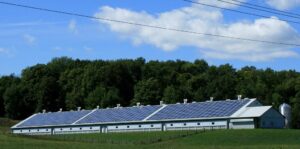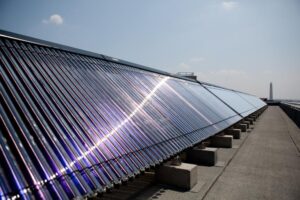Using solar power to heat your pool is an eco-friendly and cost-effective way to extend your swimming season and enjoy comfortable water temperatures. Solar pool heating systems harness the energy from the sun and convert it into heat, providing a sustainable alternative to traditional heating methods. In this article, we will explore the steps and considerations involved in utilizing solar power to heat your pool, helping you make the most of this renewable energy source.
Solar pool heating systems consist of three main components: solar collectors, a circulation system, and a control mechanism. The solar collectors, usually installed on the roof or ground, absorb sunlight and heat the pool water as it circulates through them. A circulation system, including pipes, valves, and a pump, transports the heated water from the collectors to the pool. The control mechanism regulates the system’s operation, ensuring efficient heat transfer and temperature control.Before installing a solar pool heating sunshine coast system, evaluate your property’s solar resources. Consider factors such as the amount of sunlight received throughout the year, shading from trees or buildings, and the available space for solar collector placement. Ideally, the collectors should be exposed to the maximum amount of sunlight for optimal heat generation. Assessing your property’s solar suitability will help determine the system’s efficiency and effectiveness.

Determining the appropriate size of the solar system is crucial for efficient pool heating. Factors such as pool size, desired water temperature, climate, and the swimming season’s duration influence the system’s sizing. A professional solar installer can help assess these factors and calculate the required collector area and pump capacity to ensure sufficient heat transfer and optimal performance.Solar collectors are typically mounted on the roof or a ground-based rack system. The collectors should be positioned to maximize sunlight exposure, facing south (in the northern hemisphere) or north (in the southern hemisphere) with minimal shading. Proper installation, including secure mounting and weatherproof sealing, is essential to ensure long-term functionality and durability.
The circulation system, consisting of pipes, valves, and a pump, is responsible for transporting the heated water from the collectors to the pool. The system should be designed to minimize pressure loss and ensure efficient water flow. The pump should be adequately sized to accommodate the required water circulation rate and provide sufficient pressure for effective heat transfer.A control mechanism is essential to regulate the solar pool heating system. It includes temperature sensors, flow control valves, and a control panel. The control panel allows you to set desired water temperatures, monitor system performance, and adjust settings as needed. Safety features, such as pressure relief valves and freeze protection mechanisms, should also be incorporated to prevent damage to the system during temperature extremes.

Regular maintenance is necessary to ensure optimal performance and longevity of the solar pool heating system. This includes periodic inspection of the collectors, checking for debris or obstructions, and cleaning them if necessary. The circulation system should be monitored for proper water flow and pressure. Additionally, checking the control panel, sensors, and valves for any malfunctions or errors is crucial. Following the manufacturer’s maintenance guidelines and scheduling professional inspections will help keep the system running efficiently.
